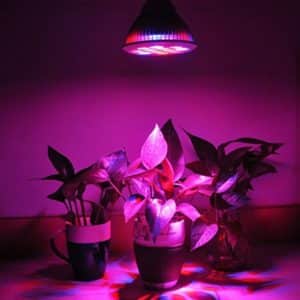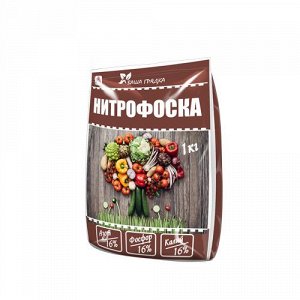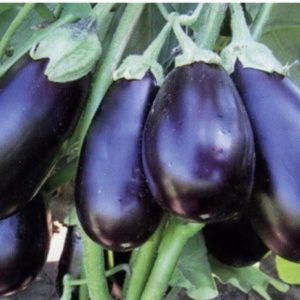Review of the Nutcracker eggplant variety: advantages and disadvantages, nuances of cultivation
Wild eggplant as a crop was first discovered in Eastern India. Then people were attracted by the interesting appearance of the fruit and compact bushes. Today, the attractive purple vegetable is widespread throughout the world.
It is useful in its properties and is used in the preparation of many dishes. Alone varieties eggplants are more bitter, while others, on the contrary, have a pleasant mild taste. Today we will talk about the Nutcracker variety, which is grown by gardeners throughout the country.
Description of the variety
The vegetable is a hybrid, has excellent yields and high immunity to diseases and pests. It ripens within 40-50 days, is planted in seedlings, and is unpretentious in care.

Distinctive features
The height of the bush depends on the growing conditions. In open ground it reaches 1 m, in a greenhouse – about 1.5 m.
The bushes are semi-spreading, the leaves are classic green, rounded and regular in shape. The early ripening hybrid is not afraid of frost and drought.
Fruit characteristics and yield
The fruits are spherical, shaped like a pear. The weight of one vegetable is about 0.5 kg, the surface is glossy, deep purple. The pulp is white, the taste is not bitter. The length of the Nutcracker reaches 13-17 cm. From 1 sq. m summer residents collect about 20 kg.
Interesting! Eggplant is also called nightshade, as it belongs to the nightshade family. And in eastern countries the vegetable is called “badrijan” or “bubrijan”.
How to grow Nutcracker eggplants yourself
Experienced gardeners advise growing this variety exclusively in seedlings. This will make it easier for the crop to adapt to certain climatic conditions of the region and avoid many diseases. Let's take a closer look at how to properly plant eggplants and care for them.
Growing seedlings
Seedlings are prepared 65-70 days before the plant is planted in the ground. To do this, purchase seeds and disinfect them in a solution of hydrogen peroxide at the rate of 100 ml of water per 3 ml of peroxide. Heat the mixture to 40 degrees and soak the material in it for 10 minutes. It is recommended to carry out the procedure immediately before sowing.
The soil for the Nutcracker should be fertile and nutritious with neutral acidity. An excellent option is a mixture of soil from the garden, ready-made soil and sand. All ingredients are taken in equal quantities and mixed. To provide the composition with the required level of acidity, a little dry wood ash is added to the mixture.
Plant the eggplant in any convenient container, the main thing is that it is disinfected. Sow seeds in milk cartons, cut plastic bottles, peat tablets, and wooden boxes.
Landing
Fill the containers with soil and water generously with warm water. Make holes, place one seed in each and sprinkle soil on top. Cover with film and place in a warm and bright place. The ideal room temperature is no less than 25 and no more than 28 degrees. If you want to plant several varieties of eggplant, allocate a separate container for each.
Important! Summer residents advise moistening the soil with melt water. It stimulates plant growth and improves their immunity.If there is still snow outside when preparing the seedlings, be sure to carry out this procedure.
When the first shoots appear on the hybrid, it is transplanted into a larger container. It is important to do this carefully so as not to damage the still weak and fragile stems. When transplanting, the roots should not be exposed, and the sprout should be placed in a new container with a lump of earth. The plant is buried down to the cotyledon leaves, after which it is watered with warm water.
Seedling care
Moisten the seedlings with a spray bottle to prevent excess moisture. It is better to use rainwater, and if it is not available, then settled tap water. Ideally, the water temperature should be no less than the air temperature. In addition, special attention is paid to lighting seedlings.
If there is not enough light, use special phytolamps. Lack of light causes the seedlings to stretch out and lack the strength for normal development.
Seedlings also require additional balanced nutrition in the form of fertilizers. The drug “Kristalon Special” is recognized as an excellent remedy. Apply it every 10 days to accelerate growth. It is also recommended to use mineral fertilizers with a high phosphorus content.
Important! Prepare a nutritious infusion of nettle for the seedlings. To do this, you will need finely chopped nettle leaves and a bucket of warm water. This folk remedy increases productivity and saturates the vegetable with vitamins and macroelements.
Transplantation into open ground
Sunny and sheltered areas from the wind are ideal for eggplants. During the autumn digging of beds, add peat and humus to the ground.. In the spring, add river sand or sawdust to it, which acts as natural drainage. If the soil is loamy, add more sand.A bed 30-40 cm long and 1 m wide is suitable for eggplants. Before planting, level it with a rake and water it with hot mullein solution.
On the day of transplantation, dig holes in the beds and fill them with warm water. After placing the seedlings in the holes, sprinkle soil around them. The distance between seedlings should be at least 40-50 cm.
For the first time, it is recommended to cover the sprouts with film so that they do not freeze in case of frost. The protection is removed from mid-June, but when cold weather sets in, the young plants are covered again.
Read also:
Stable and unpretentious in care, persistent tomato "Zhenaros".
Further care
Caring for the Nutcracker variety means timely watering, weeding the beds and applying fertilizers. Water the beds every five days, and the soil should always be slightly moist. If the plant grows in a greenhouse, the soil is moistened once every two weeks. It is best to water after loosening - this way the water will get to the roots faster. One bush consumes 2-4 liters of water.
Another important stage of care is weeding, which includes removing weeds and loosening. Weeds take away some of the nutrients from the crop and impede access to sunlight. In addition, they are often the cause of diseases affecting vegetables. Loosening is necessary in order to provide oxygen access to the roots and make the soil lighter.
During the entire ripening period, it is recommended to feed eggplants three times. The first fertilizer is applied 2-3 weeks after transplantation (for example, potassium chloride or ammonium nitrate). The Nutcracker is fed the second time after the formation of fruits on the lateral shoots.Liquid chicken manure is recognized as an effective fertilizer. The third time the crop is fertilized two weeks before harvesting.
Important! During fruiting, feed the plant with bird droppings and Nitrophoska. After infusing the mixture, it is recommended to water the eggplants at the rate of 1.5 liters of solution per bush. This method improves the taste of vegetables and increases yield.
Features of cultivation and possible difficulties
When growing the Nutcracker variety, gardeners are advised to pay attention to some nuances, which will help to avoid difficulties and increase productivity:
- water the plant only in the evening so that the moisture does not evaporate in the sun, but goes directly into the soil;
- When growing vegetables in a greenhouse, constantly ventilate it;
- do not forget to periodically mulch the beds.
Particular attention is paid to the formation of the bush. When the plant reaches 30 cm, pinch off the top, leaving two vegetables on the side shoots. When the stepsons begin to branch, leave one, the most powerful one, and pinch the rest. If this is not done, many unnecessary shoots will form, which will take strength from the fruits that have not yet formed.
Also, eggplants are especially sensitive to a lack of microelements, so it is recommended to feed the plant once with “Riga mixture”: one tablet is diluted in 10 liters of water and the beds are watered.
Diseases and pests
All diseases of the variety can be divided into viral, fungal and bacterial. Fungi include late blight, white and black leg, and root rot. Fungus appears due to improper care and high humidity. Fungal spores penetrate the stem through the stomata and are spread throughout the plant with water. It is recommended to fight diseases with the help of professional drugs, such as Quadris, Fitosporin, HOM.
Viral diseases include tobacco mosaic and phytoplasmosis. Because of them, the fruits become deformed and the leaves acquire a brownish-gray tint. It is almost impossible to cure a plant from such diseases, so it is necessary to carry out prevention using the products “Aktara” and “Condifor”.
Bacterial diseases appear due to low temperatures and high humidity. Bacterial blotch causes watery spots on eggplants and leaves the leaves dry and black. If the bush has already become infected with spotting, it is immediately removed and burned.
Important! The most important pest of eggplants is the Colorado potato beetle. They destroy it in several ways: manually collect it from the bushes and burn it, or use special preparations (“Colorado”, “Bikol”). The mass appearance of the Colorado potato beetle occurs during the flowering period of the bushes. Eggplants are also attacked by whiteflies and aphids, which a soap solution helps fight.
Harvesting and application
Eggplants are harvested when their skin turns a deep purple color and the flesh becomes firm. Do not let the vegetable overripe, as the pulp will become bitter and the skin will become thin. At the same time, eggplants are not able to ripen outside the bush, so it is important not to miss the ideal moment for harvesting. Check vegetables for ripeness every 2-3 days. When cutting an eggplant, leave a stem tail of 3 cm. For long-term storage, wipe the vegetables with a dry cloth and place in a dark and cool place.
Important! Eggplants cannot be stored for more than two months, so it is better to preserve them immediately. The fruits can also be dried well, then cut and frozen.The product is used in this form throughout the year, defrosted and added to dishes. At the same time, eggplants do not lose their taste and beneficial properties.
The Nutcracker variety is used to prepare a variety of dishes: spicy rolls, the famous fried eggplants with tomatoes, and even juicy lasagna. The neutral taste of the vegetable goes well with most ingredients, and its interesting appearance will decorate any salad or soup. Housewives also like to preserve eggplants for the winter. Especially tasty preparations are obtained with the addition of ginger and a mixture of Provençal herbs.

Interesting! You can make an original vegetable strudel from eggplant. In addition to this vegetable, you will need phyllo dough, feta cheese, bell pepper, olive oil, zucchini, fresh spinach leaves and egg yolk. The dough is rolled out into thin layers, greased with oil and layered with already baked and diced vegetables, spinach and feta cheese. Everything is wrapped in a roll and brushed with egg yolk. Bake in the oven for about 40 minutes.
Advantages and disadvantages of the variety
The main advantage of the Nutcracker variety is that it requires minimal care. Eggplant rarely gets sick and is immune to common crop diseases. Many gardeners also note its attractive appearance: the vegetable is shaped like a large purple pear. 
There are also several disadvantages. If a vegetable is not removed from the garden in time, it will acquire a bitter taste and become less tasty. Also, some gardeners note difficulties in forming a bush, especially when it forms too many shoots.
Farmer reviews
The Nutcracker variety has a whole “army” of fans, but some gardeners were disappointed with the harvest.
Maxim, Saratov: “I grew Nutcracker eggplant in open ground. The harvest turned out good, I collected 6 kg of vegetables from just one bush! I like the taste of eggplant, its elastic flesh. I will definitely grow more.”
Olga, Moscow: “I really like compact vegetables, as they are convenient to cut and cook. There were a lot of fruits, all neat and beautiful, practically without scratches. The pulp is tender and tasty. I especially like stuffing eggplant. You just need to remove the cap, peel the inside of the vegetable and fill it with filling.”
Irina, Orel: “I planted the Nutcracker variety in a greenhouse. In my opinion, the vegetables turned out to be too small, the maximum weight was only 170 g. The vegetables taste bitter, and the peel is very thin, which is why they had to be processed immediately. Next year I will plant other varieties in my garden.”
Conclusion
Nutcracker eggplants are very popular among gardeners and are widely used in cooking. Vegetables are rich in calcium, fiber and phosphorus. Even an inexperienced gardener can grow this variety. The main thing is to water the beds with warm, settled water every five days and apply a complex of fertilizers three times a season.